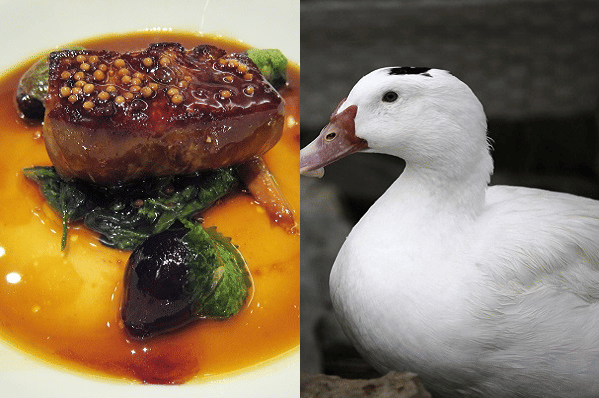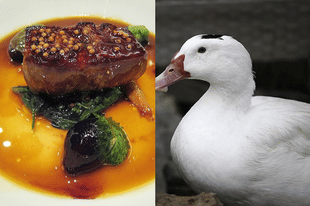News Brief
First Banned By India And Now New York: Why Foie Gras, One Of World’s Most Expensive Dishes, Is Earning Global Ire
Swarajya Staff
Oct 31, 2019, 09:51 PM | Updated 09:50 PM IST
Save & read from anywhere!
Bookmark stories for easy access on any device or the Swarajya app.


India banned the import of foie gras in 2014 making it the first and only country in the world to do so.
A highly-priced French dish is on the verge of being banned in the New York City.
The New York City council members have passed a bill that bans the sale of ‘Foie Gras’ at restaurants, or in any grocery stores, delicatessens or other outlets. Mayor Bill de Blasio has also confirmed to media outlets that he will sign it into a law.
The bill, which a majority of the council members have signed, would impose a $1,000 fine and up to one year jail-time on any restaurateur or grocery store owner caught selling Foie Gras, starting 2022.
What is Foie Gras?
Foie Gras is a French term that translates to ‘fatty liver’. A popular and speciality food product of the French cuisine, the dish is made of the liver of a duck or goose that has been especially fattened. Ducks account for 95 per cent of Foie Gras production.
The French law states that the "Foie gras belongs to the protected cultural and gastronomical heritage of France."
Currently, France is the largest producer and consumer of foie gras, though it is produced and consumed worldwide, particularly in other European nations, the United States, and China.
The rich and buttery flavour for which the dish is known for comes from the high fat content. About 85 per cent of its calories are from fat — a 120 gram serving (a moderate main-course serving) contains around 106 grams of fat and around 360 milligram of cholesterol.
To put this in perspective, McDonald’s Mc-Chicken burger (173 gram) contains 15 gram of fat and around 41 milligram of cholesterol.
However, it is not the health-related implications of the Foie Gras that have led to the prospect of the ban.
Accusations of animal cruelty
The high-content of fat in the liver of the duck expands its size to ten times its usual volume. This is often achieved through force feeding the animal via a steel tube.
The physiological basis is that many waterfowl species have the capacity to store more fat and expansion of the oesophagus (the food pipe) in anticipation of migration. However, the force-feeding in the farms goes way beyond that in natural circumstances.
In the pre-force feeding phase aims to take advantage of the natural dilation capacity of the oesophagus by increasing amount of a high starch diet.
The next phase is called gavage which involves forced feeding for 12 to 15 days. The birds are fed more food than they would eat in the wild, and much more than they would voluntarily eat domestically.
It is to be noted that France defines foie gras to have mandatory gavage usage.
The feed usually consists of corn boiled with fat (to facilitate ingestion) and results in deposits large amounts of fat in the liver. This causes steatosis (abnormal retention of fat) of the liver cells.
A funnel fitted with a long tube (20–30 cm) is used to force the feed into the bird's oesophagus. If an augur (a drilling device) is used, it takes about one minute for a single feeding. A pneumatic pump, on the other hand, has operation time of 2 to 3 seconds per duck.
The force feeding can result in injury to the oesophagus. Several studies have noted inflammation in the oesophagus as well as significantly higher mortality rates rates during the gavage phase.
An EU committee report in 2008 pointed out that the birds showed avoidance behaviour (indicating aversion) towards the person who feeds them, indicating pain and stress caused by the feeding. Other researchers have also noted increased stress-symptoms in the ducks in the gavage phase.
Also, during the force-feeding phase, the ducks are kept in individual cages which restrict natural waterfowl movements and behaviours like bathing, swimming, standing erect, turning around, or flapping wings.
Ducks are social animals and keeping them in individual cages or alone in the dark also results in poor welfare.
There are also diseases specific to birds kept in small cages, and fattened ducks are more prone to certain ailments like heat stress. The liver, usually fattened over 1000 per cent (natural change observed being 30-50 percent), is impaired and the ducks may experience restricted blood flow and breathing difficulties. Continued force-feeding may result in death as well.
The Foie Gras industry has repeatedly faced accusations of animal cruelty and investigative videos have often captured ducks being treated cruelly by the poultry workers.
Connection with amyloidosis
The controversy surrounding the Foie Gras doesn’t end here.
The force feeding of excess food stresses the liver of the ducks. If the stress continues, excess protein may build up and clump together as amyloids. These amyloids, on consumption, were shown to induce amyloidosis in laboratory mice.
Therefore, it has been postulated that Foie Gras may be a route of transmission in humans too and a risk for people with inflammatory complaints in those genetically susceptible. Alzheimer's, Huntingdon's disease, type 2 diabetes, rheumatoid arthritis, and atherosclerosis are all related to irregular amyloid protein buildup.
A number of retailers have ceased the sale of foie gras produce following campaigns and protests over production methods, including Amazon UK.
Ban in India
The Indian government banned the import of the Foie Gras in 2014 after sustained agitation by a UK-based animal rights group, Animal Equality, through its India chapter. The expensive dish was served in high-end European restaurants.
While several countries have banned its production, India became the first country in the world to ban the import of Foie Gras.
India has the lowest per-capita meat consumption in the world, a fact some attribute to poverty, but despite average incomes having tripled since 1990, meat consumption hasn't followed suit - in contrast to the pattern observed in other countries. This is because of the cultural values of Ahimsa or non-violence.
The majority Hindu population of the country also upholds vegetarian food as satvic - and in line with principles of Ahimsa, and those who do eat meat, prefer ‘Jhatka’ - in which the animal is quickly slaughtered with a sharp instrument, severing the head from the body completely, instead of being left to bleed.
Scriptures like Thirukkural, Manusmriti recommend avoiding eating meat.
Manusmriti permits eating meat in certain circumstances, but recommends that meat should produced with minimal harm and suffering. Trembling, crying or other visible symptoms of stress in the animal prior to, or after the slaughtering are considered bad omen and have to be avoided.
Therefore, there exists a strong taboo against any kind of suffering of animals prior to slaughter.
Indian ancient texts condemn violence towards not just animals but also trees, plants, insects and natural resources like rivers and forests. In Mahabharata, Bheeshma counts protection of forests, wildlife and rivers as one of duties of the ruler. Other Indic communities like Sikhs, Buddhists, Jainas also hold similar views.
Readers had pointed out a factual mistake in the article that has been now been corrected.





